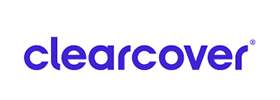From Oregon to South Carolina, Americans will see the sight that has left mankind trembling and astonished as long as humans have walked the earth.
The Great American Total Eclipse will be one for the record books as totality junkies from across the globe hurry to the best viewing destinations.
On August 21, 2017, for the first time in 99 years, the earth, moon, and stars will line up perfectly in a total eclipse that can be viewed in 14 states. Best viewing is predicted to be in Oregon where sunshine is predicted, especially near Madras. Local time will be 10:21 a.m. PDT and totality will last for about 2 minutes and 7 to 8 seconds, depending on where the viewer stands.
On the East Coast, the eclipse will start a little after 1 p.m. and reach totality just before 3 p.m.
Further inland, viewers in Illinois and Kentucky will experience 40 seconds more totality.
“A solar eclipse can only take place at the phase of new moon, when the moon passes directly between the sun and Earth and its shadow falls upon Earth’s surface,” according to space.com.
The eclipse will be actively pursued by a sub-culture of totality followers who travel to various parts of the world to experience the out-of-this-world phenomena many times during the year. Scientists will also be watching the display and the shadow allows them to see solar flares.
No, you can’t look at the sun and watch the eclipse.
If you have ever held a small magnifying glass over dry grass, you know what happens. The sun’s rays become so focused that the grass catches fire.
That is what will happen to your eyes if you attempt to watch the eclipse. Your retina will burn up. You won’t know it until you can’t see any more.
DO NOT LOOK AT THE SUN WITH THE NAKED EYE.
Do not look at the eclipse through binoculars or a telescope or a camera lens. The same thing happens: Your retina burns up.
Do NOT use sunglasses, polaroid filters, smoked glass, exposed color film, x-ray film, or photographic neutral-density filters.
What you can do is make a pinhole projector. There are many instructions online for this.
For ideas on how to view, go to www.exploratorium.edu/eclipse/how-to-view-eclipse.







































